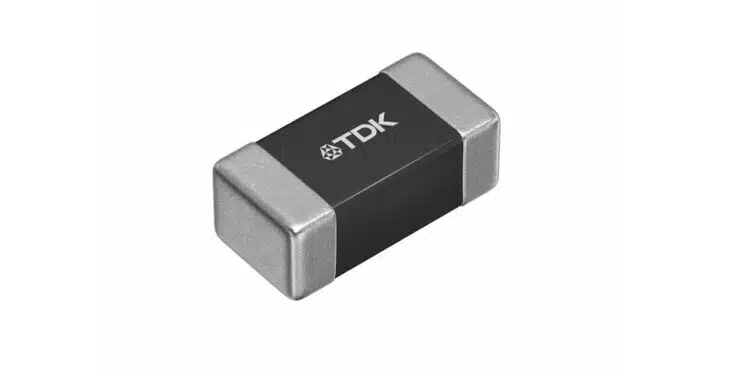TDK Corporation expanded its multilayer chip beads for automotive and commercial power supply lines with 1608 8A high ripple current capability series.
Mass production of the product series began in May 2025.
These 1608-size chip beads (1.6 x 0.8 x 0.6 mm – L x W x H) for power supply lines achieve a rated current of 8 A, the industry’s highest value.
SMD chip beads are used as noise suppression components in power and signal circuits. In a circuit with a current of 8 A or more, usually two or more chip beads must be used in parallel.
This has the disadvantage that the current is not evenly distributed between the ferrite beads. TDK’s new product simplifies the circuit structure because fewer components are required compared to conventional methods, and it improves the quality of power circuits.
The MPZ1608-PH series of products halves the component footprint in comparison with circuits using two conventional 1608-sized chip beads. Moreover, the highly reliable components with a specified operating temperature of up to +125 °C are designed to be used in high-temperature environments like automotive and industrial equipment applications.
With TDK’s proprietary materials and structural designs adapted to market needs, the company is committed to expanding its lineup of high rated current products in the automotive, industrial equipment, and consumer equipment areas. These chip beads will serve as EMC components contributing to the enhancement of the quality of power circuits.
Features
- Compatible with large currents as high as 8 A
- Reduces components and footprint
- Highly reliable; can be used in high-temperature environments like automotive applications
Applications
- Power circuit for different pieces of equipment: in-vehicle ECUs, power train, vehicle body control, automotive multimedia (telematics), base stations, PCs, servers, set-top box, smart grids, robots, smartphones, tablet devices, etc.
Specifications
| Type | Applications | Impedance [Ω] @100 MHz | DC resistance [Ω] max. | Itemp [A] max. +85 °C | Itemp [A] max. +125 °C |
|---|---|---|---|---|---|
| MPZ1608SPH220ATAH0 | Industrial | 22 ± 7 | 0.004 | 8 | 5 |
| MPZ1608SPH220ATDH5 | Automotive | 22 ± 7 | 0.004 | 8 | 5 |
































